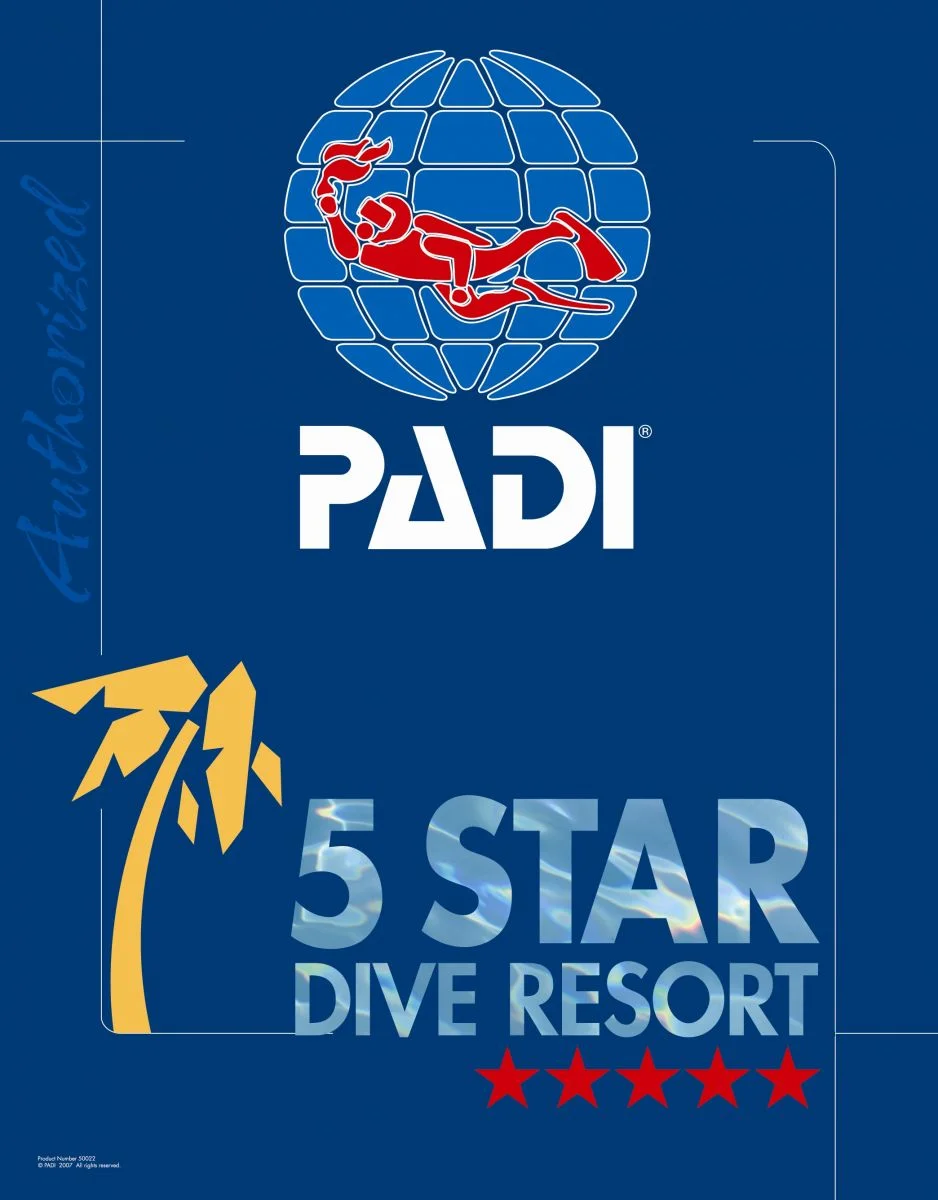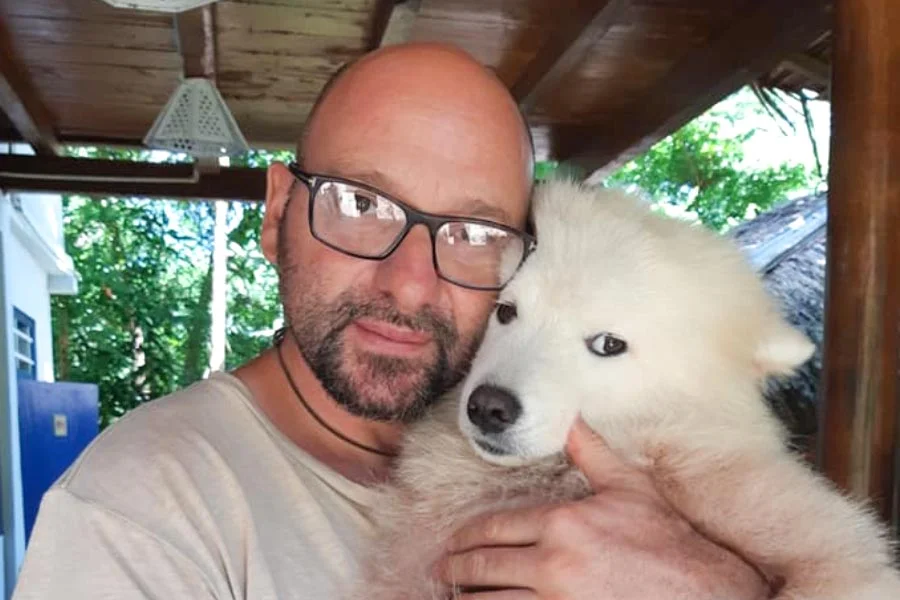Diving in Bunaken
We are a based on the East side of Bunaken Island, only a few minutes from your dive dream. Small groups, skilled dive masters, special service for photographer, European PADI instructor.
Bunaken National Marine Park was established in 1991, in 2004 the magazine Asian Divers votes Bunaken’ s walls as the best in Asia. But Bunaken is not only fantastic coral reef diving, on the mainland is also possible to find interesting “muck diving” spots.
Enjoy the dream…
Our diving philosophy
Diving is always in small groups with 1 guide for 3/4 divers. The courses are almost always 1:1 ratio with the instructor, snorkelling is accompanied by a snorkeling guide. For EXTRA safety we can provide NITROX 32 at an extra cost. If Specialty Training is completed in Raja Laut, the use of NITROX will be FREE of charge during your staying.
We are characterized by the flexibility and willingness to please our customers because we are divers like you, we will dive with you every day and we want to have fun exactly like you.
Best period to visit Bunaken
Bunaken National Marine Park is 1° Latitude North from the equator. The days are characterized by 12 hours of light and 12 hours of darkness. The seasonality gives way to a dry season (late March to October) and a rainy one (November to February). Even in the rainy season are rare prolonged periods of bad weather and the air temperature never drops below 25/26 °C. The waters of the park are generally very clear (from 20 to 40m), allowing the underwater photographer to capture subjects very different from each other: from macro of to colorful sea slugs and pygmy seahorses until amazing ambient on the vertical walls decorated by huge sponges and sea fans.
The water temperature varies from 30 ° to 26 ° and a 3mm wet suit is normally used on every occasion.
Dive Sites
BUNAKEN TIMUR (East Bunaken) – A great dive site right in front of RAJA LAUT, very good for snorkelling too with a beautiful reef with lush coral growth. Is a very long reef covering all the east side of the island between the village of Bunaken and Sachiko’s Point. It can be divided in at least 2 or 3 dive spots.
Sharks, barracudas, groupers, napoleons, eagle rays and a lot of small and colourful reef fish. Few times I saw at the top reef a blue rings octopus hiding between the corals.
Possible to do a night dive in front of our Resort during which is easy to spot different species of crabs (decorator, sponge), bamboo sharks, big nudibranchs, snails, sea snakes, moray eels, green turtles.
MUKA KAMPUNG (Front of the Village) – Located in front of Bunaken Village. A steep drop-off on which we are often in company with eagle rays, sting rays, tunas, napoleon, fantastic soft corals and nudibranches, crabs, shrimps. Also the right location to observe Mandarin Fish mating in a late afternoon dive.
LEKUAN 1 (or TURTLE CITY) – The 3 “lekuans” are considered a signature of Bunaken world famous wall diving. A dramatic drop off of 40-50m followed by a step and than again precipitating in the blue. Very common to spot huge (up to 2m) green turtles, sharks (white tip, black tip), napoleon and “clouds” of schooling fish like anthias, fusiliers, butterfly, red tooth triggerfish. Many macro species in the shallows as well as scorpions (devil, ambon, leaf…) and stone fishes.
LEKUAN 2 – Wall reef with many vertical drops, cuts, holes and overhangs. Excellent numbers and variety of almost all kinds of reef fish as well as invertebrate life.
LEKUAN 3 – A sandy sloping bottom at first with pinnacles and outcroppings make Lekuan 3 a different underwater landscape. The “scenario” then changes into a vertical wall dropping into the deep ocean. Numerous nudibranchs, leaf fish, ghostpipefishes, scorpion fish as well as green turtles, sharks, snappers. Here is also possible for a trained eye to spot the rare and tiny (4/5 mm) Hippocampus pontohi (a newly-discovered species of pygmy seahorse)
CELAH CELAH (Cracks) – This is a deep wall with large cracks and overhangs. Black tip or white tip sharks use to sleep here side by side with big green turtles. Flathead crocodile fish are a pretty common encounter along with many other small “critters” hiding in feather stars and soft corals. As it is sheltered from the main currents is a classic night dive spot.
ALUNG BANUA (Named after the Village) – Alung Banua is a wall with lot of value for macro photographers. Crocodile flathead, leaf fish, ghostpipefishes and frogfishes are often observed here along with green turtles and many schooling reef fish.
FUKUI (Named after a Japanese diver) – It is a sandy slope with steep drops. Here you can observe different “cleaning stations” and their customers. Is possible to spot jacks, barracuda, bat fish, tuna, snappers.
A sandy area at Fukui is home to a colony of garden eels. At a depth of 20-22 metres are 5 “Tridacna” giant clams lying in a row (size around 1m each). Current can be strong depending on the tides.
RON’S POINT – This is a sandy slope slowly becoming a beautiful coral wall. Following the slope you will reach a sandy bottom with garden eels and at a dept of around 30m the drop off. In the blue is possible to see eagle rays, tuna, sharks, jacks and occasionally large barracuda. In the shallow part characterized by coral rubble you can find morays, ghost pipe fish, leaf fish, nudibranches, crabs ( is possible to uncover the fantastic boxing crab) and any different species of anemone.
Sometimes especially with low tide and in the afternoon Dugongs (sea cows) are leaving the sandy lagoon and mangrove where they graze and swim around the reef making the joy of divers and snorkellers.
MANDOLIN POINT (named after the musical instrument) – Turtles, shark, eagle ray, large schools of fusilier, Napoleon wrasse, anemones, moray eels and huge Acropora “Table” coral. Mandolin is a spot with many and beautiful seafans in which sometimes is possible to spot Pygmy Seahorses.
RAYMOND’S POINT – A beautiful wall rich in hard and soft coral. Whiptail coral are widespread and coral fish life is rich, including big pelagic species. Feather stars squat lobster are particularly beautiful and abundant here.
MIKE’S POINT (Named after Mike Severns, underwater photographer) – Big pelagic, soft coral, large gorgonians, hump head parrotfish and Napoleon Wrasse. Current can be pretty strong, depending on tides.
TANJUNG PARIGI (Well’s Corner: Named after the Village) is located in the northern part of Bunaken Island. Wall diving with Surgeonfish, Rabbitfish, Parrotfish, large Jacks, tunas, green turtles.
SACHIKO’S (Named after a Japanese diver) – Spectacular wall usually with presence of strong to medium current. Fantastic drift with the possibility to spot big ones: tunas, barracudas, sharks, napoleons, mola mola (Sun Fishes, with cold water), jacks, turtles, eagle rays. Hard and soft coral with a lush fantastic garden at the top.
PANGULINGAN (No explanation of the given name) is a fantastic dive starting with a steep and deep wall and ending in a sandy area with big coral boulders. After passing the wall and watching in the blue for big pelagic: tunas, schools of jacks, white and black tip sharks, barracudas, big turtles you will reach a coral slope at 20-25m. The slope is rich with any kind of reef fish and beautiful decorated with soft and hard corals and groups of batfish are usually swimming here. Once passed the slope you arrive in the boulders area at 10-5m where searching is often rewarded with beautiful nudibranches, ribbon eels, moray eels, mantis shrimps, crabs. If the current is pushing hard is possible to leave this area and follow the edge of the drop off.
One of my favourites gives it best with presence of medium to strong current, in this conditions is not a beginners dive site thou.
NEGERI (Village) – Giant clams, Banded Pipe fish, Parrotfish, Angelfish, and other schooling fish are found here. At 30m a sandy slope offer possible encounters with sharks and big pelagic. Barrel sponges and a nice variety of beautiful soft and hard coral are also found here.
BUALO (No explanation of the given name) – A magnificent wall with many small terraces and caves, where huge barrels sponges and soft corals are frequent.
TANJUNG KOPI (Coffee’s corner) – This site often has strong current with good visibility. There many types of Parrotfish, Surgeonfish, Triggerfish, and sometimes Blacktip and Hammerhead sharks. There is an abundance of beautiful soft coral, Gorgonians, and Whip Corals.
SILADEN UTARA (Siladen North) – A good place to see Turtles, Snappers, Emperor Angelfish. Reef white tip sharks are also found here. A lot of macro life at the stepped sandy bottom.
SILADEN – A great place for both snorkellers and divers. Have variety of hard and soft corals and has become a host to different types of colourful reef fish. The wall itself is covered in hard and soft coral and it has lots of small rich overhangs which are loaded with soft corals, hydroids and lots of small things to discover. Napoleon Wrasse and Spotted Eagle Rays are regular visitors to this site .
BANGO (Named after the Village) – Sandy slope with outstanding soft coral and many critters.
GORANGO (Shark in Manadonese) – Wall diving with presence of colourful hard and soft coral. Not more sharks than any other spot.
BARRACUDA POINT – Big school of barracuda (up to more than 200 pieces) can be found often here. Other pelagic can be spotted too.
JALAN MASUK (The way to go inside) – Whitetip sharks are commonly spotted here. Many schooling tropical fish including Bumphead parrotfish and Parrotfish. Current can be strong depending on the tides.
BATU KAPAL (The stone ship) – Barracudas and whitetip sharks are common sight here. Cleaner Shrimps, scorpion fish, different kind of nudibranches and giant cuttlefish are also found at this dive site. Possible to organize and early morning dive to try to see.
TANJUNG PISOK (Knife’s Corner) – After a sandy slope will follow a beautiful wall rich in sponges and staghorn corals. In the blue possible to see sharks (white and black tip), tuna, jacks, bumphead parrotfishes. In the shallowest part at the top reef are interesting nudibranches, shrimps and crabs to be observed.
MOLAS SHIPWRECK – This steel hulled Dutch merchant ship sunk in 1942 and now lies just 5 minutes from Molas Beach. The wreck is very nicely covered with corals and easely accessible. Decending on a rope in company of schooling bat fish is then possible to reach the wreck and the his deepest point: the right propeller lying at 40m. Often interesting nudibranches can be found and under the hull are sleeping big white and black tip sharks, After 20-30 minute sdiving the wreck is recommended to swimm towards the beach and finish the dive in the shallow not far from Black Rock. On this muck diving area possible to spot nice nudibranches, pipefishes, ribbon eels. The wreck goes down to 40m, so plan to finish the dive on the top of the wreck before you get into deco and then swim from the bow towards the reef through open water. The reef is quite nice too, but visibility is not always very good. We saw several cuttlefish, nudibranchs and two ribbon eels.
TIWOHO (Named after the Village) – Muck diving spot. After descending along a rope on a sandy bottom at 17m you will reach the reef and swim SE till a corner where normally current is getting stronger. At this point you will start to swim back at a shallower dept ending your dive near the mooring buoy. Possible to spot between 25 and 12m giant cuttlefish, ghost pipefish, ribbon eels, different kind of nudibranches, big stone fish, razor fish, soft coral shrimp and many other small and amazing critters.
BOLUNG – Muck diving spot. Descending along a rope at 15m on a big coral boulder. Following the sandy margin at 8-10m S direction. Swimming in deepest water till 25m on a sandy bottom and returning along patches of coral. Possible to see common seahorses, frog fish, flathead crocodile fish, cuttlefish, nudibranches.
WORI (Named after the Village) – Muck diving spot. Basically a shallow sandy plateau full of wonders. Different kind of octopuses are spot here and between them the incredible mimic octopus, common seahorses, cuttlefish, flashy scorpion fish, rays, nudibranches, cow fish, ribbon eels.
This are the main dive spots, there are many others less known but equally beautiful at the same time is possible to organize day trip to Bangka island or to “muck diving” destinations of Manado like BATA SKOTA, CITY EXTRA or POPOH.











